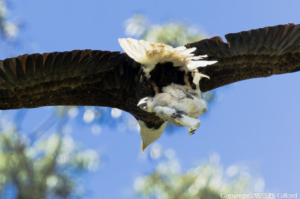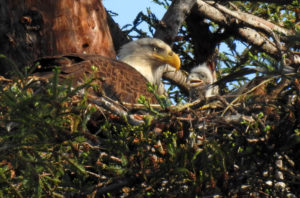In November, California voters decisively defeated Proposition 23, a measure that would have indefinitely suspended AB 32, the landmark law to curb the state’s greenhouse gas emissions. That was a genuine victory for the environmental community, but not an uncomplicated one. For better and worse, it likely means more wind turbines on our interior hills and perhaps even on the West Marin coast.
There are currently about 800 wind turbines in the Montezuma Hills in Solano County, but another 59 turbines with a potential generating capacity of 118 megawatts are being proposed there by enXco, a San Diego-based wind company. The environmental impact report (EIR) for the project, called Shiloh III, does not address the migration routes of birds, though these low rolling hills just northeast of Suisun Bay sit squarely in the Pacific Flyway.
Doug Bell, the East Bay Regional Park District‘s wildlife program manager, isn’t surprised. Environmental impact reports rarely address bird migration, he says. Bell has been researching bird kills around existing turbines on lands the park district acquired near Vasco Caves Regional Preserve, in the Altamont Pass Wind Resource Area. Altamont is the oldest functioning wind farm in North America, and its nearly 5,000 turbines represent just about every model made in the development of wind turbines, including some that are especially dangerous to birds.
“An area that’s great for wind energy is also great for raptors,” says Bell. Altamont Pass creates a perfect storm for wind and “whacks,” Bell’s term for bird strikes. He says that the mean annual mortality estimates at Altamont Pass from 2005 to 2009 include more than 400 red-tailed hawks, nearly 500 American kestrels, 700 burrowing owls, and almost 100 golden eagles, which when combined with other species amounts to more than 9,000 dead birds.
“Any wind farm is going to have a certain number of impacts,” says Bell. “The key is to buckle down and get everybody at the table to find ways to minimize those.” Bell and several research partners have been amassing data and building a complex computer model to ensure that repowering (replacing old turbines with new) will actually reduce bird kills. In test areas owned by the park district, the model shows that in some cases, moving a turbine a small distance, away from a ridgeline or saddle for example, may substantially decrease bird mortality. Though they used data from some 11,000 raptor sightings to create their model, Bell’s team plans further study to verify the accuracy of their predictions for reducing bird strikes.
Along the coast in Marin County, Florida-based NextEra Energy wants to erect two research towers to test suitability for wind generation on privately owned farms north of Dillon Beach. County planners delayed approval of the towers, calling for more study of impacts on the viewshed and local bird populations. In this case, “not in my backyard” is for the birds.

.jpg)



